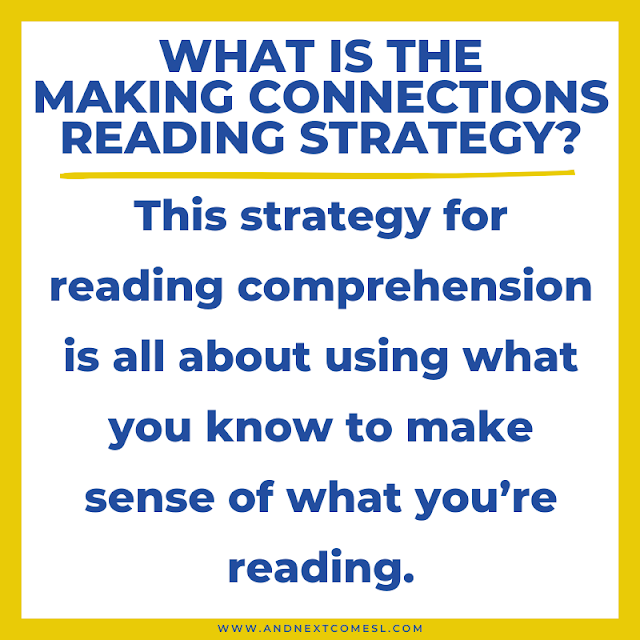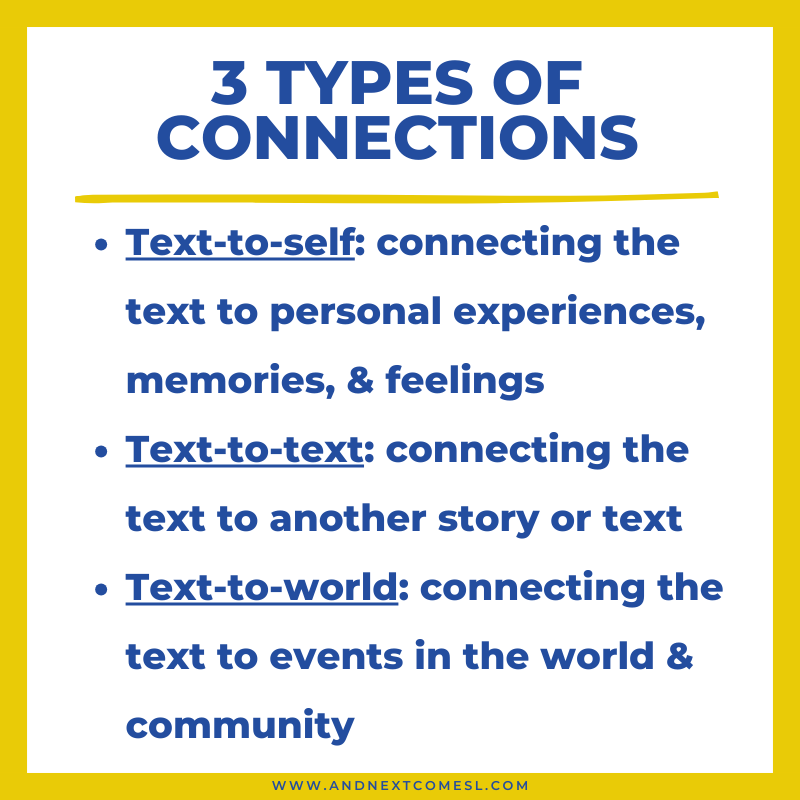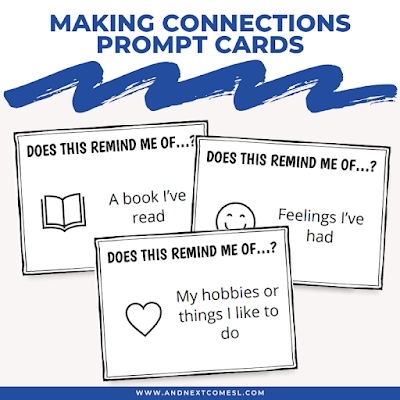The most common questions I receive about hyperlexia are often related to hyperlexia and reading comprehension. That's because comprehension issues are common in hyperlexic children and it's an area that many families need help addressing, both at home and at school.
Now, I know it would be nice to have an all-in-one solution to help with this area. But, the reality, though, is that reading comprehension isn't just one thing.
There's a variety of skills that can be targeted and a variety of strategies that can be used to help. There's things like visualizing, making predictions, making inferences, and so on.
Another strategy is to work on building background knowledge and schema.
And another strategy is to practice making connections between the text and your background knowledge. That's our focus here.
So, let's take a closer look at this making connections reading strategy. What is it? How does it work? And how can you use this strategy with your hyperlexic child?
What is the Making Connections Reading Strategy?
This strategy for reading comprehension is all about using what you know to make sense of what you're reading. Basically, making connections between your background knowledge and the text you are reading.
Think of it this way. How much easier is it to understand something when you can personally relate it to something you already know about, are familiar with, or have experienced? It makes a big difference, right? Well, that's essentially what this reading comprehension strategy is all about.
This strategy is great because it encourages the reader to get involved and actually interact with the text instead of just reading the words on the page. While reading is what hyperlexic kids do best, we do need to help support them with understanding what those words mean.
Parts of the Text that You Can Make Connections With
The great thing about this strategy is that it can be used before, during, or after reading. You can encourage your kid to use various parts of the book or text to make these connections, including the:
- Cover
- Title
- Author
- Characters
- Pictures
- Chapter Titles
- Actions of the characters
- Relationships between characters
- Emotions of the characters
- Choices the characters make
- Problem or conflict that needs to be resolved
- Solution to the problem or conflict
- Style in which the book is written
- Words or phrases the characters say
- Overall theme of the book
As you can see from this list, there's lots of opportunities to practice making connections. So how do you go about making those connections? Well, first, let's discuss what types of connections can be made.
3 Types of Connections That Can Be Made
There are three different types of connections that can be made and they're all powerful ways to boost comprehension and understanding of a text.
1. Text-to-self connections
This type of connection is all about connecting the text on a personal level, relating what they are reading to their own experiences, memories, and feelings. Basically, connecting the story with their own life.
For instance, this might mean:
- The character reminds the reader of their sister
- The setting reminds the reader of a place they went to on a recent vacation
- The character is in grade two just like the reader
- The character is dealing with the death of a pet and the reader remembers how sad they felt when their dog died
2. Text-to-text connections
This type of connection is all about connecting the text to another story or text that they have read before.
But, what does this look like exactly? Well, text-to-text connections include:
- The topic of the text reminds them of another text that they've read
- The reader notices that the books have the same author
- The books share a similar genre (e.g., they're both fantasy stories)
3. Text-to-world connections
This final type of connection is all about making connections between the text and the events in the community and the world around you. It may include comparing the text to movies, TV shows, newspapers, world events (historical or current), social issues, or similar.
So these types of connections might mean that:
- The plot reminds the reader of the devastation caused by Hurricane Katrina
- The reader notices that the setting of the story is in a different time period than they currently live in and thinks about how difficult it would be to live in that time period vs now
- The reader remembers learning about the first man on the moon while reading a book about an astronaut going to space
Tips for How to Use this Strategy with Hyperlexic Readers
Not every connection your child will make will be deep, but once they make a connection, you can always prompt them to go deeper. Here are some ideas on how to start using this strategy:
- Use picture books that are similar in theme or have similar characters like this video from Play to Learn Preschool discusses how to do (for hyperlexic kids, this might mean reading an ABC book about animals and then reading a fact book about animals or it might mean reading Elephant & Piggie books back to back - things you might already be doing anyway)
- Model using the strategy yourself by pointing to parts of the book and telling your child what it reminds you of
- Ask your child questions before, during, and after reading that would encourage them to make connections (for a hyperlexic child, you'll want to also use a visual cue for this - see below)
For hyperlexic readers, it is really important to include some written or visual cues. Here are some ideas for using visual supports while working on this making connections reading strategy with hyperlexic kids:
- Explain the reading strategy to them by writing out the "rules" of using this strategy and writing out the three types of connections
- Use visual prompts that encourage your kid to make connections
- Provide them with the language they need to make the connections, such as "This remind me of..." (free printable making connections in reading scripts here, but you could also just write the prompts down on a whiteboard or index card)
- Use a graphic organizer for your child to fill in the different types of connections
- Write out questions (or prompts) on a piece of paper or on a whiteboard that will encourage them to think about what possible connections there might be (for example, you could write the question "Does this remind you of anything?")
- Write down any connections you and your child make so they can see what connections they have made (remember, if it isn't written down, it might not exist to them!)
Start Making Connections with these Printable Resources
These printable resources will help you start using this comprehension strategy right away. They're perfect for hyperlexic learners in particular.
Grab your copy of these scripts here
Grab your copy of these prompt cards here
A Quick Summary of the Making Connections Reading Strategy
Since that was quite a bit of information, lets do a quick recap of this reading comprehension strategy.
- This strategy is all about making sense of what you're reading by making connections between your background knowledge and the text that you are reading.
- You can make connections with any part of the text: cover, title, author, characters, plot, and more!
- There are three different types of connections that can be made: text-to-self, text-to-text, and text-to-world.
- To use this strategy with hyperlexic readers, you'll want to model the strategy explicitly and use written or visual cues to support them while they make connections.
As you learned, this comprehension strategy can be quite helpful, especially for hyperlexic learners. So are you going to give this making connections reading strategy a try?









